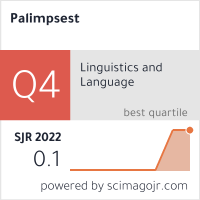«I LOVE CONTAMINATION. WITHOUT MIXTURES NEITHER THERE WOULD BE ANY FORM OF LIFE». LAILA WADIA AND THE INTERBREED LANGUAGE
DOI:
https://doi.org/10.46763/PALIM22713131eAbstract
In today's society, more global and complex, we inevitably observe a social context’s transition, but also a cultural imaginary’s modification, which appears through a new and extraordinary literature. Migratory flows, in fact, changed the Western society’s physiognomy, and foreign authors who chose the Italian language for their narratives, contributed to the traditional literary canon’s renewal, in a dynamic and transcultural perspective. This contribution aims to underline the new literary dimension of these authors, at a linguistic, stylistic and content level. Linguistic hybridity characterizes these authors: their texts testify, in fact, how the native language does not disappear in contact with the acquired language, but mixes with it, creating a new rhythm and unexpected stories. Laila Wadia, an Indian writer living in Trieste, created a hybrid English, in which English and Indian terms converge in perfect symbiosis, creating a new, living language that reflects her multiple and dynamic identity. It determines a language made of substrates and contaminations, in which the words take on a new timbre and an extraordinary tone. Every language is transitable, and, in the crossing, elements are internalized and filtered, determining the conquest of an original and permeable space, in which every element is never in its place, but perpetually combined, thanks to the meeting/confrontation with heterogeneous realities.
Keywords: Migrant literature; Western canon; Memory; Identity; Transcultural dimension.


